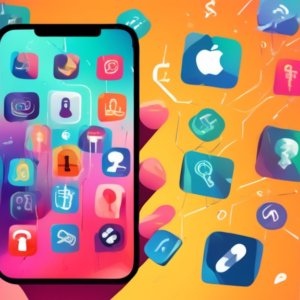Switching password managers on your iPhone might seem daunting, but it’s a straightforward process. Whether you’re seeking enhanced security, more features, or a better user experience, this comprehensive guide will walk you through the necessary steps. We’ll cover popular password managers like 1Password, LastPass, Dashlane, and Bitwarden, providing clear instructions for seamless transitions.
Why Switch Password Managers?
Before diving into the how-to, let’s explore the compelling reasons why you might consider switching password managers:
- Enhanced Security Features: Different password managers offer varying levels of security. You might switch to a manager with more robust encryption, multi-factor authentication options, or advanced breach monitoring.
- Feature Set and Usability: Password managers come equipped with diverse features like auto-fill, password generation, secure note storage, and more. Your current manager might lack certain features you desire, or its interface might feel cumbersome.
- Platform Compatibility: Seamless integration across multiple devices is crucial. If you use a mix of Apple, Windows, or Android devices, ensuring your chosen manager supports all platforms is essential.
- Pricing and Value: Password managers offer free and premium plans. Evaluating your budget and the features you need can lead you to a more cost-effective solution.
Steps to Switch Password Managers on iPhone
Now, let’s break down the process of switching password managers into manageable steps:
1. Choose Your New Password Manager:
Research and select a password manager that aligns with your security needs, feature preferences, and budget. Popular options include:
- 1Password: Known for its user-friendly interface, robust security, and excellent cross-platform compatibility.
- LastPass: Offers a feature-rich free tier, strong security features, and a user-friendly experience.
- Dashlane: Provides a comprehensive suite of security tools, including a VPN and dark web monitoring.
- Bitwarden: Open-source and privacy-focused, Bitwarden is a strong contender with a generous free plan.
2. Install Your New Password Manager App:
Head to the App Store and download your chosen password manager app onto your iPhone. Create an account and set up your master password. This password acts as the key to your entire password vault, so make it strong and memorable.
3. Export Data from Your Current Password Manager:
Most password managers allow you to export your stored data into a CSV file. This file contains your login credentials, secure notes, and other sensitive information.
Here’s how to export data from popular password managers:
- 1Password: Open 1Password, navigate to Settings > Export, and choose your preferred format (CSV is generally recommended).
- LastPass: Access LastPass, go to Account Options > Advanced > Export, and select LastPass CSV file.
- Dashlane: Within Dashlane, go to Settings > Security > Export your data, and choose CSV file.
- Bitwarden: Open Bitwarden, click on your profile icon > Tools > Export Vault, and select the CSV option.
4. Import Data into Your New Password Manager:
With your CSV file ready, it’s time to import your data into your new password manager.
Here’s how to import data into popular password managers:
- 1Password: Navigate to Settings > Import, choose CSV, and select the exported file from your iPhone.
- LastPass: Go to Account Options > Advanced > Import, select Generic CSV file, and choose your exported data.
- Dashlane: Within Dashlane, go to Settings > Security > Import your data, select CSV file, and import your data.
- Bitwarden: Click on your profile icon > Tools > Import Data, choose CSV, and select your exported file.
5. Enable Autofill in iOS Settings:
To allow your new password manager to seamlessly auto-fill login credentials within apps and websites, you need to enable autofill in your iPhone’s settings.
- Open the Settings app on your iPhone.
- Scroll down and tap on Passwords.
- Select Password Options.
- Choose your new password manager from the list of AutoFill Password Managers.
6. Test Autofill and Update Logins:
Visit a website where you have an account and test the autofill functionality. Your new password manager should prompt you to fill in your login details. If everything works correctly, consider updating some of your passwords to enhance security further. Most password managers offer built-in password generators for this purpose.
7. Disable Your Old Password Manager:
Once you’ve confirmed that your new password manager is functioning flawlessly, you can disable autofill for your old password manager. This step ensures that you don’t accidentally use outdated logins and streamlines your online experience.
Conclusion:
Switching password managers on your iPhone is a simple yet crucial step in enhancing your online security and managing your digital identity. By following this comprehensive guide, you can smoothly transition to a new password manager that perfectly aligns with your needs and preferences. Remember to choose a reputable manager, export your data securely, import it into your new vault, enable autofill, and disable your old manager to complete the process effectively.
